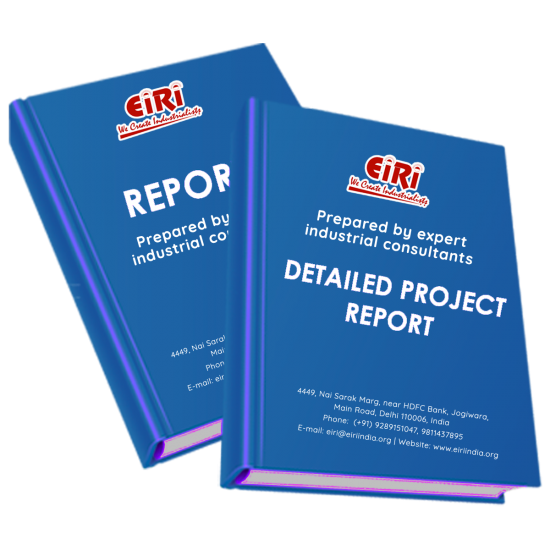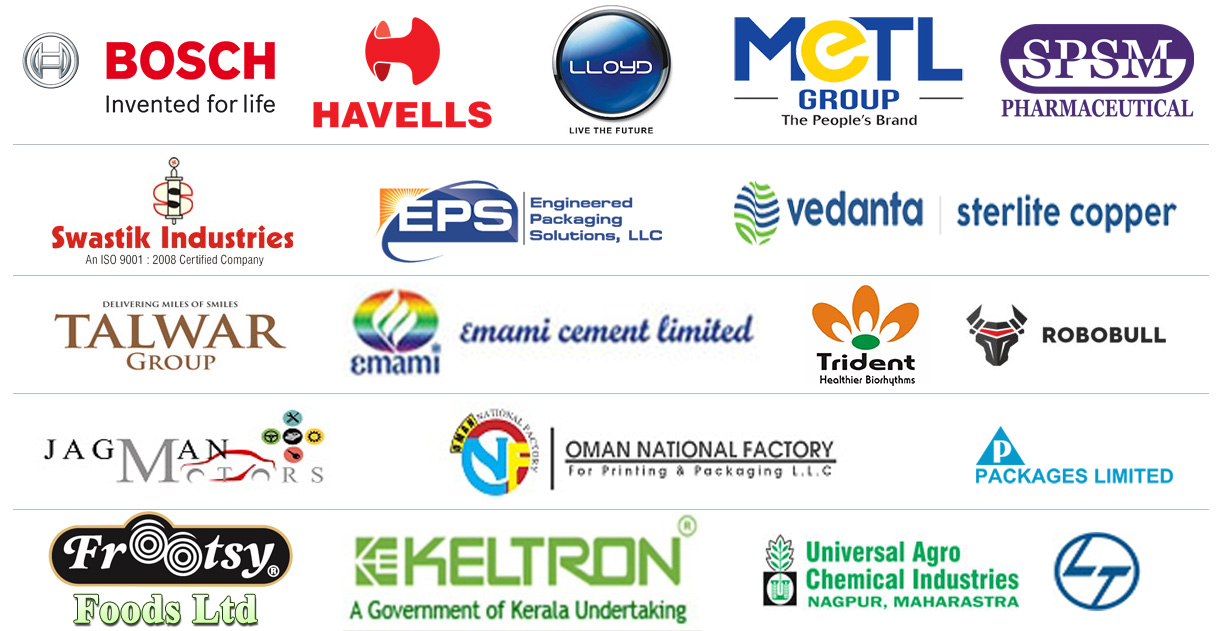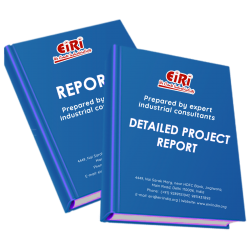Detailed Project Report on fish farming (shrimp and catla)

- More than 40 years of experience
- Managed by expert industrial consultants
- ISO 9001-2015 Certified
- Registered under MSME, UAM No: DL01E0012000
- 24/5 Research Support
Get your quesries resolved from an industry expert. Ask your queries before report or book purchase. - Custom Research Service
Speak to the our consultant to design an exclusive study to serve your research needs. - Quality Assurance
All reports are prepared by highly qualified consultants & verified by a panel of experts. - Information Security
Your personal & confidential information is safe & secure.
FISH FARMING (SHRIMP AND CATLA)[CODE NO.3647]
Fish farming or pisciculture involves raising fish commercially in tanks or enclosures such as fish ponds, usually for food. It is the principal form of aquaculture, while other methods may fall under mariculture. A facility that releases juvenile fish into the wild for recreational fishing or to supplement a species' natural numbers is generally referred to as a fish hatchery. Worldwide, the most important fish species produced in fish farming are carp, tilapia, salmon, and catfish.
Demand is increasing for fish and fish protein, which has resulted in widespread overfishing in wild fisheries. China provides 62% of the world's farmed fish. As of 2016, more than 50% of seafood was produced by aquaculture.
Farming carnivorous fish, such as salmon, does not always reduce pressure on wild fisheries. Carnivorous farmed fish are usually fed fishmeal and fish oil extracted from wild forage fish. The 2008 global returns for fish farming recorded by the FAO totaled 33.8 million tonnes worth about $US 60 billion.
SHRIMPS:-
Arthropoda, class Crustacea, subclass Malacostraca, order Decapods, suborder Macrura)
A considerable part of the fisheries in India is constituted by the crustaceans, such as shrimps, shrimps and lobsters. shrimps and shrimps, which belong to the group Natantia, are similar in appearance; shrimps, however, are smaller in size. Lobsters are robust, heavily aromoured creatures; they are exclusively marine and are included under the group Reptantia. All the three decapods have elongated bodies divisible into two easily recognizable parts, viz. The cephalothorax and the abdomen. The cephalothorax is formed by the fusion of the head and thorax, and is made up of not less than thirteen segments, five in the head and eight in the thorax. The abdomen is composed of six distinct segments with a tail piece or telson behind the last segment. Each of these segments generaally carries a single pair of appendages, which are useful in the normal functioning of the body. Head appendages are two parirs of antennae, sensory in function, and a pair of mandibles and two pairs of maxillae, used in capturing and masticating food. Thorax possesses three pairs of maxillipedes, probably used for holding the prey, and five pairs of walking legs for crawling. Abdominal appendages are adapted for swimming. Sexes are separate and the reproductive organs are mainly situated in the cephalothorax.
Penaeus Fabr:- The rostrum is serrated on both the edges; a gill is attached to the body wall on the last thoracic somite; exopodites are present on all or all but the last pair of thoracic legs. Larges shrimps caught from the Indian seas belong to this genus.
P. indicus
BENG.:- Chapda chingri;
MAL.- Vella-chemmeen naran- chemmeen.
The body is somewhate laterally compressed an when alive the shrimp is rather white and translucer with a large number of brown, grey of green dot over the carapace and abdomen. The antennae an tips of the appendages are pink. It is fairly large in size, growing to about 20 cm. in length, and occur commonly along the entire coast-line of the country in coastal waters, estuaries, coastal lakes and back waters.
M. affinis
MAL. Kazhadnthan-chemmeen.
The rostrum is curved in this species, and the last pair of thoracic legs in both sexes, when stretched forwards, project beyond the tips of the antennal scale. In respect of size and a few other characters it resembles M. monoceros (Fabr.), described below. It occurs along both the coasts, but is not very common in the backwates and estuaries.
M. brevicornis
BENG. Dhanbone Chingri.
The rostrum in this species is shot, rarely reaching to the middle of the second joint of the antennular peduncle. Fully grown forms rarely exceed 13 cm. in length. It is the commonest penaeid species of West Bengal, found in vast numbers in the inundated paddy dield during the rainy season. It is foud, though in smaller numbers, on the Bombay coast also.
P.Stylifera
MAL. - Karikkadi-chemmeen.
It is characteristically reddish brown in colour. The presence of a number of small spines on either side of the pointed extremity of the telson further distinguishes this species from others. Adult shrimps reach a length of about 13 cm. Its distribution is mainly on the west coast, and it is caught in large numbers along the Kerala coast during December-May. A variety of this species, viz. coromandelica Alcock, with two spines on each side of the telson, has also been recorded from various places along the east coast.
P.styliferus
BENG. - Ghora chingri.
This species inhabits both marine and brackish waters and contributes substantially to the shrimp fishery of the Gangetic delta and the Bombay coast. It seldom exceeds 5 cm. in length.
P.tenuipes (Henderson)
This species is easily recognizable by the long and slender fourth and fifth pairs of walking legs. Its habitat is similar to that of P. styliferus and it is caught in large numbers off the Bombay coast.
M.malcolmsonii is very common in the Chilka lake in Orissa, Hooghly estuary, Godavari, and Ganga towards the close of the monsoon and is mainly a freshwater species tolerating brackish water. During this period, mostly the gravid female shrimps are caught. They do not exceed 23 cm. in length.
COST ESTIMATION
Plant Capacity Shrimp: 12 Ton/Year Catla Fish: 6 Ton/Year
Land & Building (15 Hectare) Rs. 3.55 Cr
Plant & Machinery Rs. 11 Lac
Working Capital for 3 Months Rs. 13 Lac
Total Capital Investment Rs. 3.96 Cr
Rate of Return 8%
Break Even Point 78%
INTRODUCTION
SHRIMPS
P. INDICUS
M. AFFINIS
M. BREVICORNIS
P.STYLIFERA
P.STYLIFERUS
P.TENUIPES (HENDERSON)
RULES & REGULATIONS OF SHRIMP FARMING
B.I.S. SPECIFICATION
MARKET SURVEY
FISH FARMS TO PRODUCE NEARLY TWO THIRDS OF INDIA'S FISH
SUPPLY BY 2030
FLYING FISH
PALM TREES LINING FISH PONDS AT KONDURU IN ANDHRA PRADESH
PALM TREES LINING FISH PONDS AT KONDURU IN ANDHRA PRADESH
WORLD CAPTURE FISHERIES
AND AQUACULTURE PRODUCTION
USES OF CATLA FISH
METHODS OF AQUA CULTURE
EXTENSIVE AQUACULTURE
INTENSIVE AQUACULTURE
EXPRESSING EGGS FROM A FEMALE RAINBOW TROUT
CONTROLLING ROES MANUALLY
CAGE SYSTEM
COPPER-ALLOY NETS
IRRIGATION DITCH OR POND SYSTEMS
COMPOSITE FISH CULTURE
DETAILS OF CATLA FISH
CHARACTERISTICS OF CATLA FISH
DETAILS OF CATLA FISH FARMING
SHRIMPS
SERGESTIDAE
ATYIDAE
MUD-SHRIMPS
BRINE-SHRIMPS
COLLECTION OF SEEDSHRIMP
TRANSPORTATION OF SEEDSHRIMP
MANAGEMENT OF PRODUCTION PONDS
STOCKING
GROWTH AND PRODUCTION
PRODUCTION AND TECHNIQUE
OF CATLA FISH FARMING
PRODUCTION
PRODUCTION SYSTEMS
SEED SUPPLY
NURSERY
REARING FINGERLINGS
ONGROWING TECHNIQUES
HARVESTING TECHNIQUES
HANDLING AND PROCESSING
CATLA FISH FARMING
DISEASES AND CONTROL MEASURE IN CATLA FISH FARMING
DETAILS OF SHRIMP FARMING
SUITABLE SOIL TYPE FOR SHRIMP CULTIVATION
POND MANAGEMENT IN SHRIMP CULTIVATION
STOCKING FOR SHRIMP CULTIVATION
SEED SELECTION IN SHRIMP CULTIVATION
(I) SIZE
(II) MORPHOLOGY
(III) COLOR
(IV) BEHAVIOR
(V) EXTERNAL FOULING
(VI) PATHOGEN FREE
STOCKING DENSITY IN SHRIMP CULTIVATION
FEED AND FEEDING IN SHRIMP CULTIVATION
NUTRIENT REQUIREMENTS IN SHRIMP CULTIVATION
WATER QUALITY MANAGEMENT IN SHRIMP CULTIVATION
HARVESTING AND HANDLING OF SHRIMP CULTIVATION.
METHODS OF HARVESTING IN SHRIMP CULTIVATION
TIMING OF HARVESTING AND SELLING
DISEASE, PREVENTION AND TREATMENT IN SHRIMP CULTIVATION.
QUALITY CONTROL AND MARKETING IN SHRIMP CULTIVATION
ADAPTING & CONSTRUCTING POOLS
SIZE OF POOL
EMPLOYING THE POOL
CLEANING THE POOL
REPAIRS OF POOL
EXTENDING AN OLD POOL
THERE ARE THREE POSSIBLE WAYS TO EXTEND LINE POOLS
CONSTRUCTION OF A NEW POOL
CONSTRUCTION OF A WATER COURSE
FOUNTAINS & OTHER MECHANICAL OXYGENERATORS
NEED FOR OXYGEN
WATER PLANTS
OTHER SPECIFIC MAINTNANCE WORKS ARE AS FOLLOWS
TIDAL FLOW
POLLUTION
SILT
PRODUCTIVITY
HEIGHT OF WATER
WATER TEMPERATURE
DISSOLVED OXYGEN CONTENT
SALINITY
PH
SOIL NUTRIENTS
PROXIMITY TO SHRIMP SEED
MANPOWER AVAILABILITY
OTHER FACILITY
SHRIMP SEEDS
FOOD AND FEEDING HABITS
DISTRIBUTION AND ABUNDANCE OF P.INDICUS SEED IN
THE WILD IN DIFFERENT REGIONS
PENAEUS MONODON
PENAEUS INDICUS
SUPPLIERS OF PLANT AND MACHINERY
SUPPLIERS OF RAW MATERIALS
APPENDIX – A:
01. PLANT ECONOMICS
02. LAND & BUILDING
03. PLANT AND MACHINERY
04. OTHER FIXED ASSESTS
05. FIXED CAPITAL
06. RAW MATERIAL
07. SALARY AND WAGES
08. UTILITIES AND OVERHEADS
09. TOTAL WORKING CAPITAL
10. TOTAL CAPITAL INVESTMENT
11. COST OF PRODUCTION
12. TURN OVER/ANNUM
13. BREAK EVEN POINT
14. RESOURCES FOR FINANCE
15. INSTALMENT PAYABLE IN 5 YEARS
16. DEPRECIATION CHART FOR 5 YEARS
17. PROFIT ANALYSIS FOR 5 YEARS
18. PROJECTED BALANCE SHEET FOR (5 YEARS)
How to Make Project Report?
Detailed Project Report (DPR) includes Present Market Position and Expected Future Demand, Technology, Manufacturing Process, Investment Opportunity, Plant Economics and Project Financials. comprehensive analysis from industry covering detailed reporting and evaluates the position of the industry by providing insights to the SWOT analysis of the industry.
Each report include Plant Capacity, requirement of Land & Building, Plant & Machinery, Flow Sheet Diagram, Raw Materials detail with suppliers list, Total Capital Investment along with detailed calculation on Rate of Return, Break-Even Analysis and Profitability Analysis. The report also provides a birds eye view of the global industry with details on projected market size and then progresses to evaluate the industry in detail.
We can prepare detailed project report on any industry as per your requirement.
We can also modify the project capacity and project cost as per your requirement. If you are planning to start a business, contact us today.
Detailed Project Report (DPR) gives you access to decisive data such as:
- Market growth drivers
- Factors limiting market growth
- Current market trends
- Market structure
- Key highlights
Overview of key market forces propelling and restraining market growth:
- Up-to-date analyses of market trends and technological improvements
- Pin-point analyses of market competition dynamics to offer you a competitive edge major competitors
- An array of graphics, BEP analysis of major industry segments
- Detailed analyses of industry trends
- A well-defined technological growth with an impact-analysis
- A clear understanding of the competitive landscape and key product segments
Need Customized Project Report?
- Ask for FREE project related details with our consultant/industry expert.
- Share your specific research requirements for customized project report.
- Request for due diligence and consumer centric studies.
- Still haven't found what you're looking for? Speak to our Custom Research Team
About Engineers India Research Institute:
Note: We can also prepare project report on any subject based on your requirement and country. If you need, we can modify the project capacity and project cost based on your requirement.
Our Clients

Our Approach
- Our research reports comprehensively cover Indian markets (can be modified as per your country), present investigation, standpoint and gauge for a time of five years*.
- The market conjectures are produced on the premise of optional research and are cross-accepted through associations with the business players
- We use dependable wellsprings of data and databases. What's more, data from such sources is handled by us and incorporated into the report
Why buy EIRI reports?
- Our project reports include detailed analysis that help to get industry Present Market Position and Expected Future Demand.
- Offer real analysis driving variables for the business and most recent business sector patterns in the business
- This report comprehends the present status of the business by clarifying a complete SWOT examination and investigation of the interest supply circumstance
- Report gives investigation and top to bottom money related correlation of real players/competitors
- The report gives gauges of key parameters which foresees the business execution





















